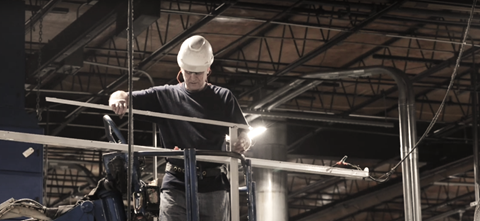
Are you throwing away money every month? Lighting Retrofits add more money back to your bottom line.
Companies can experience an energy savings of as much as 70% in lighting-related energy usage after completing a lighting retrofit. Not only does a retrofit decrease power usage, many utilities provide rebates and incentives to help make the change. A modern lighting retrofit is about more than just a fixture for fixture, or lamp for lamp swap. It's about improving safety and productivity with task and area specific light levels, reducing the cost and effort of replacing lamps and ballast in existing fixtures, giving a facility manager the flexibility to control when and at what levels lighting turns on, and even leveraging technology to provide data and analytics captured through sensors and mesh communication networks using the fixtures already in the ceiling.
That is a lot of stuff to include in one project! So, how do you get started? While it is possible to do an lighting audit yourself, an energy specialist can serve as an advocate to coordinate between manufacturers, distributors, the local utilities, and even if a customer wants, the electrical contractor they want to complete the job and finance companies.
A casual glance up at the ceiling is all that's needed to determine if there is money to be saved. But where do you go from there? Everything starts with a plan and that plan begins with a lighting and energy audit. During a typical lighting audit, an energy specialist does a walkthrough of the entire facility. Using sophisticated mobile tablet apps, they document the fixture and lamp types, light levels, controls, and the utilization of lighting in each area. Using this data, they create a lighting layout map that shows how different fixture and lamp types and the physical placement of the lighting can optimize the light levels for each area while coming up with the most energy efficient solution for that space.
After determining the technology solution, it's time to determine what the local utility company can help cover. Many times, there are great incentive programs available that can cover a significant portion of the cost to upgrading to LEDs. Often, the utilities have specific lists of products that they prefer and they may provide more incentive for one solution over another. A trained energy specialist can help you maximize the potential incentives by selecting products preferred by your local utility. They can also help navigate the paperwork process and help with submitting the completed forms.
How the project is managed will largely determine the ultimate success or failure of the retrofit. An experienced energy specialist can manage product lead times, product delivery, staging, coordination with contractors and submission of rebate information.
That is a lot of stuff to include in one project! So, how do you get started? While it is possible to do an lighting audit yourself, an energy specialist can serve as an advocate to coordinate between manufacturers, distributors, the local utilities, and even if a customer wants, the electrical contractor they want to complete the job and finance companies.
Getting Started
A casual glance up at the ceiling is all that's needed to determine if there is money to be saved. But where do you go from there? Everything starts with a plan and that plan begins with a lighting and energy audit. During a typical lighting audit, an energy specialist does a walkthrough of the entire facility. Using sophisticated mobile tablet apps, they document the fixture and lamp types, light levels, controls, and the utilization of lighting in each area. Using this data, they create a lighting layout map that shows how different fixture and lamp types and the physical placement of the lighting can optimize the light levels for each area while coming up with the most energy efficient solution for that space.
After determining the technology solution, it's time to determine what the local utility company can help cover. Many times, there are great incentive programs available that can cover a significant portion of the cost to upgrading to LEDs. Often, the utilities have specific lists of products that they prefer and they may provide more incentive for one solution over another. A trained energy specialist can help you maximize the potential incentives by selecting products preferred by your local utility. They can also help navigate the paperwork process and help with submitting the completed forms.
How the project is managed will largely determine the ultimate success or failure of the retrofit. An experienced energy specialist can manage product lead times, product delivery, staging, coordination with contractors and submission of rebate information.
